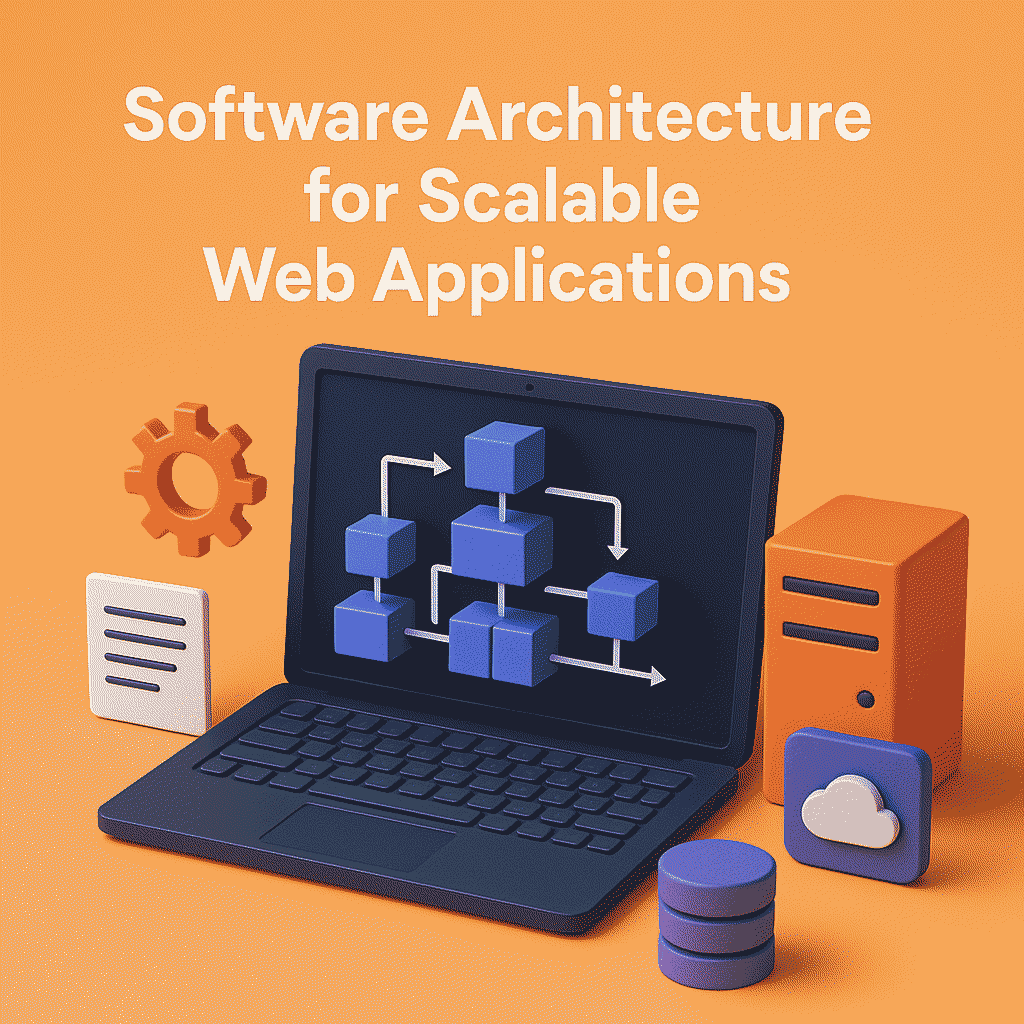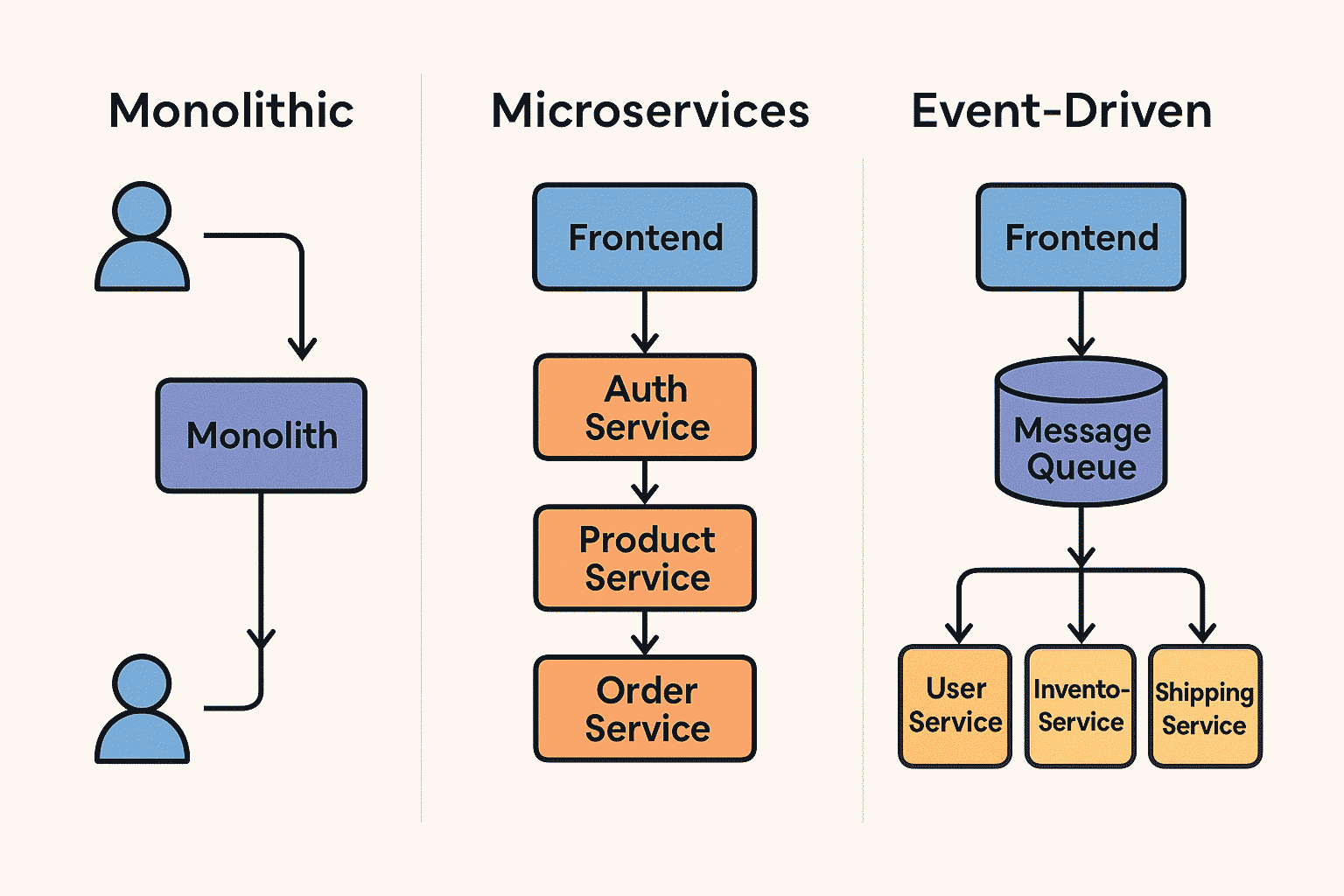
Software Architecture for Scalable Web Applications: Patterns, Practices, and Pitfalls
As your web application gains users and features, what once worked perfectly may begin to buckle under load. Choosing the right software architecture can determine whether your system handles growth smoothly—or collapses under pressure.
🔍 What is Scalable Architecture?
Scalable architecture is designed to handle increasing demand without a complete rewrite. It supports:
- Vertical scalability – adding more power (CPU, RAM) to existing machines
- Horizontal scalability – adding more machines (load balancing, distributed systems)
- Functional scalability – expanding features and responsibilities cleanly
🏗️ Architectural Patterns for Scalability
These are the foundational structures to build scalable systems:
1. Monolithic Architecture
All logic is deployed as a single unit. Simple to start but hard to scale and maintain as the project grows.
2. Layered (N-Tier) Architecture
Divides the system into layers: presentation, business logic, and data. Encourages separation of concerns.
3. Microservices Architecture
Breaks functionality into small, independently deployable services. Great for scaling teams and performance, but increases complexity.
4. Event-Driven Architecture
Services communicate via events and queues (e.g., RabbitMQ, Kafka). Enables asynchronous processing and better decoupling.
5. Serverless Architecture
Runs code in response to events using managed infrastructure (e.g., AWS Lambda). Excellent for auto-scaling small functions.

⚙️ Best Practices for Web Scalability
- Cache everything wisely: Use Redis, Memcached, and CDNs to reduce load.
- Async is king: Offload heavy tasks using job queues or background workers.
- Database optimization: Use indexing, partitioning, read replicas, and sharding if needed.
- Stateless services: Design APIs to avoid server session dependency for easier scaling.
- CI/CD & monitoring: Automate deployments and integrate logging, metrics, and tracing (e.g., ELK, Prometheus).
🛑 Common Pitfalls to Avoid
- Over-engineering too early: Don’t build microservices for a 3-person app.
- Neglecting observability: No logs, no metrics = no clue what's going wrong.
- Tight coupling: Components that depend heavily on each other block scalability.
- Ignoring database growth: Tables with millions of rows slow everything down—plan early.
🛠️ Real-World Insight
In one of my projects, we started with a monolithic Node.js backend and React frontend. As demand grew, we split the backend into modules using a microservice-inspired structure. But we kept deployment monolithic to reduce complexity—an example of applying scalability thinking without over-architecture.
✅ Conclusion
There’s no one-size-fits-all solution. Your architecture should reflect your current needs and your future growth. Start simple, measure performance, and evolve with care.
Choose architecture like you choose tools—intentionally, not trendily.

Add your comment